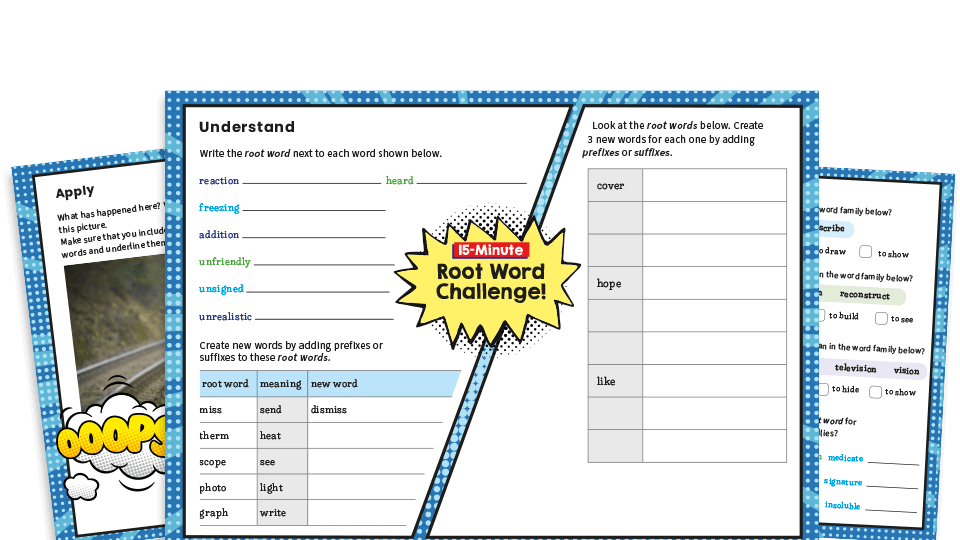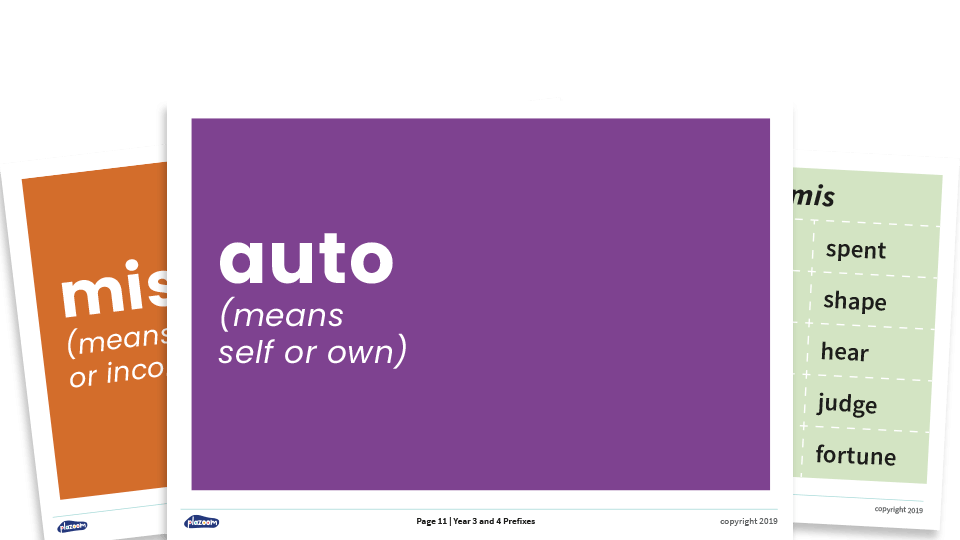![Image of Sue]()
By Sue Drury
Last updated 15 December 2025
Did you know that disaster comes from the heavens? At least, that’s where the root of the word come from. People used to think that bad events were caused by the actions of the stars. The root astro means star (hence astronaut) and the prefix dis is generally negative. So dis-astrous events are all the fault of the stars!
Like stars, the study of words and their roots can be very illuminating. It can also help pupils with their spelling as well as their ability to decipher unfamiliar words. Here are some suggestions for inspiring your pupils to extract – literary draw (tract) out (ex) – deeper understanding from the words they encounter.
What is a root word?
A root word is the basic word at the heart of a collection of related words. The addition of prefixes and suffixes will alter the meaning or the word class but they will all share the same origins. Examples of root words include act, legal and proper.
What is a word family?
By identifying roots, we can compile word families. What is a word family? It is a group of words that all share the same root and thereby increase our understanding of what they mean. For an example of a word family, why not start with the word family? How about familiar, unfamiliar, familiarise, familiarising, and so on? Once you start, it’s sometimes hard to stop.
Try giving your class a word or two and challenge them to compile their own word family lists. A good place to start would be familiar nouns and verbs such as hear, cycle and book. They will probably think of more word family examples than you ever expected.
Word family activity
To take it a little further, you could get your pupils to turn those words into a tree. Start with the root word as the trunk – or the root if you prefer – and encourage them to lay out their words as the spreading branches of the tree. After all, one branch often leads off to other connected words. For example, the familiar branch in the example above can lead to variations of the verb to familiarise: familiarising, familiarised and so on.

Teaching word families
There are, of course, other ways of achieving a similar end. We offer a range of resources to help pupils practise these word-detective skills. Try our SPaG challenge mats for instance. These offer exercises to understand, challenge, test, explain and apply these skills supported by eye-catching images to act as prompts.
Prefix practice
Key to this topic is the understanding of prefixes. Pupils should be helped to use a range of prefixes, especially those deemed age appropriate such as un-, mis-, in-, im- and il-.
As well as recognising what these mean (it’s amazing how many prefixes say basically the same thing), they should recognise the which prefix to use for which words. The prefix im-, for example, tends to go before root words beginning with the letters p and m. That should help them to remember why some words, such as immoral, have a double letter in them.

Prefix word list
For a more tactile and visual experience, try our interactive SPaG displays for prefixes. This attractive resource offers trimmable examples of words and prefixes which pupils can shuffle and sort to see how prefixes can change the meanings of root words. They can then use them to create a display for all to see.
Word families suffix practice
Like prefixes, suffixes can change the meaning of a word. Take hope, hopeful and hopeless, for example. They can also change the class of a word, like when the addition of the suffix -ment changes the verb arrange into the noun arrangement. For extra challenge, why not get your pupils to indicate the class of each branch of their word family trees as well as the words themselves?

Adding a suffix is not always straightforward. Help them to understand the rules for adding suffixes by using our Years 3 and 4 spelling workouts which will also give them the chance to use these skills in context.
SATs worksheet
Can you identify the root words of Statutory and Ability? Only joking! Clearly, the most important part of learning about root words and word families is the impact it will have on children’s reading, writing and spelling. Nevertheless, they will probably feature in one way or another during the grammar, punctuation and spelling tests.
Why not acclimatise your pupils to the sort of questions they could expect by giving them some test-style questions? You will find examples on our Year 6 SATs Practice - Word Families worksheets.

Word pattern and letter pattern warnings
Make sure you emphasise that some words can contain letter strings of a root word by sheer coincidence. For example, the verb hear is not a route of heartless although you could build quite a word family out of the root heart. Encourage children to think about the meaning to check whether it is even possible that they could be part of the same family. And remember, if in doubt, use a dictionary!
Sue Drury qualified as a primary teacher in 1999. Teaching pupils from Year 1 to Year 8, she has held a variety of positions including maths and English subject leader, year leader, and assistant headteacher. Sue has mentored students and NQTs, offering guidance and advice using her years of experience. She created many of Plazoom's literacy resources.